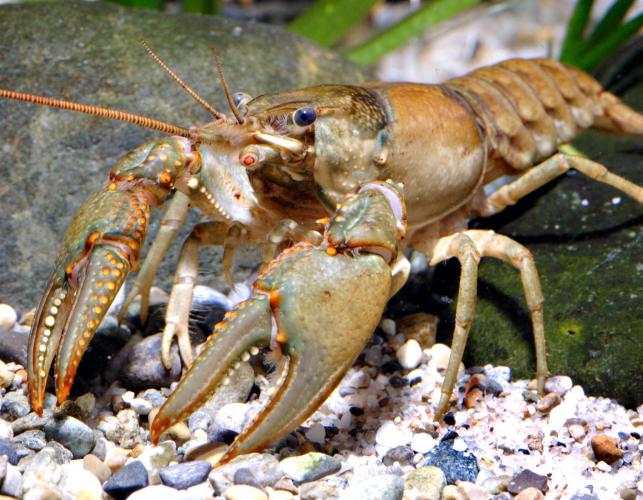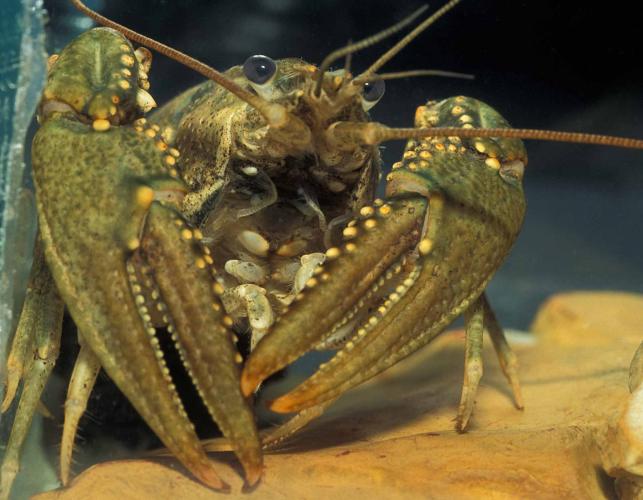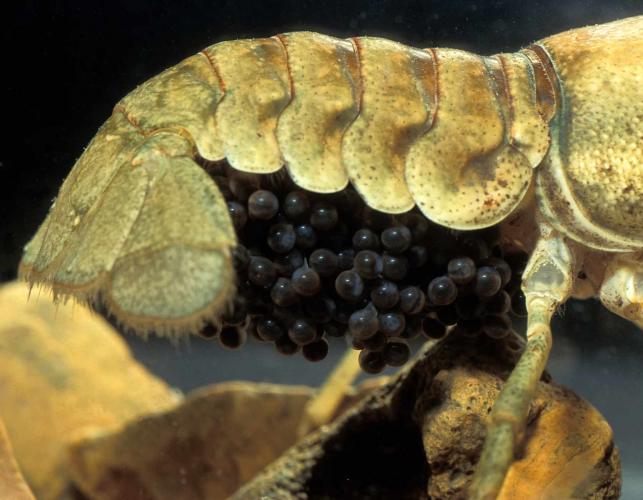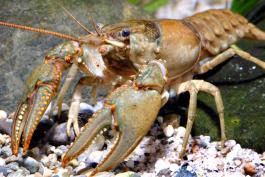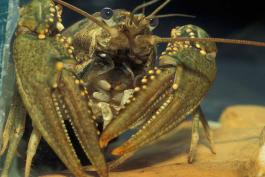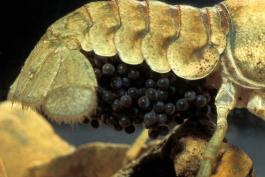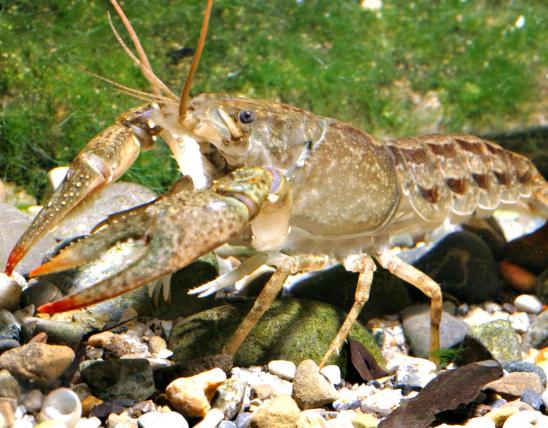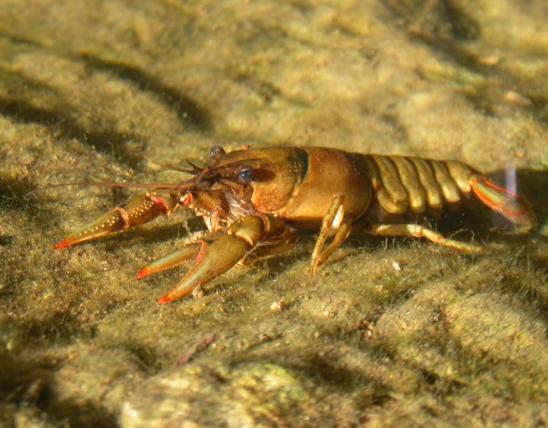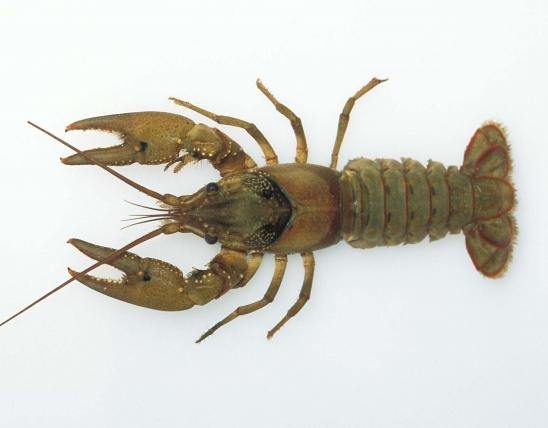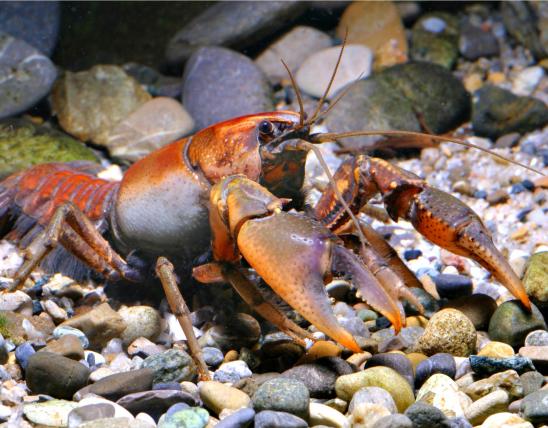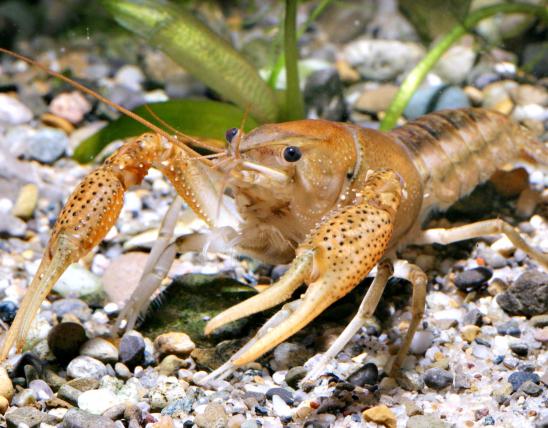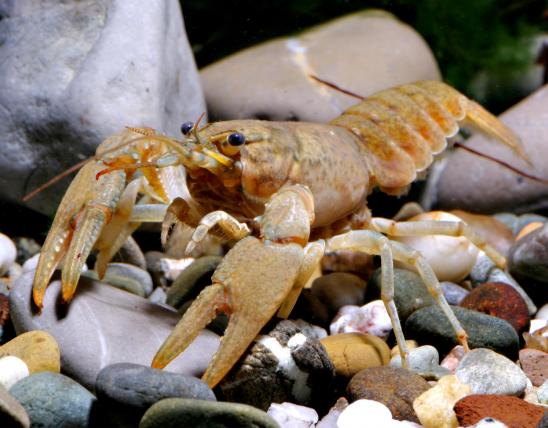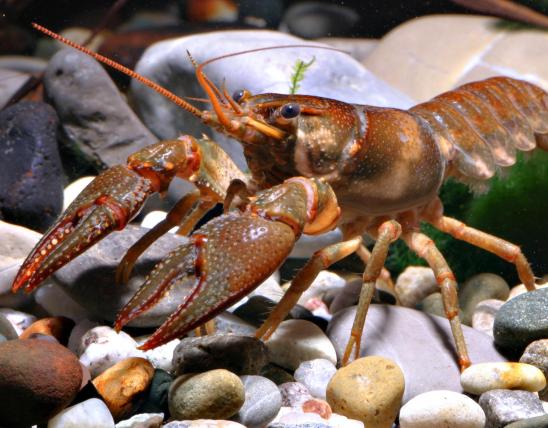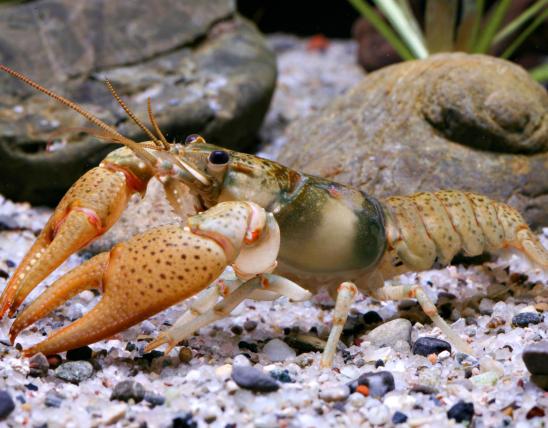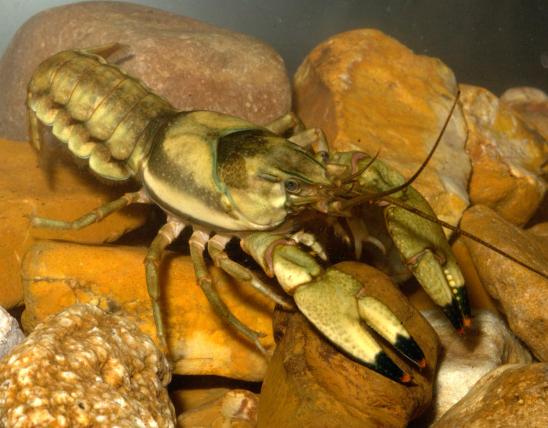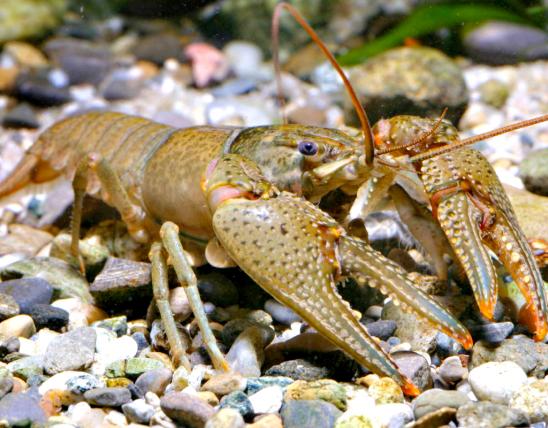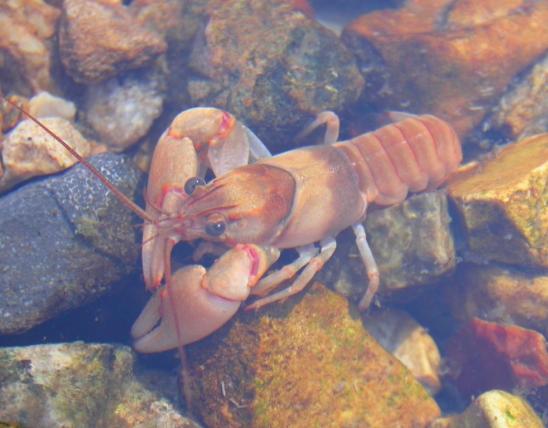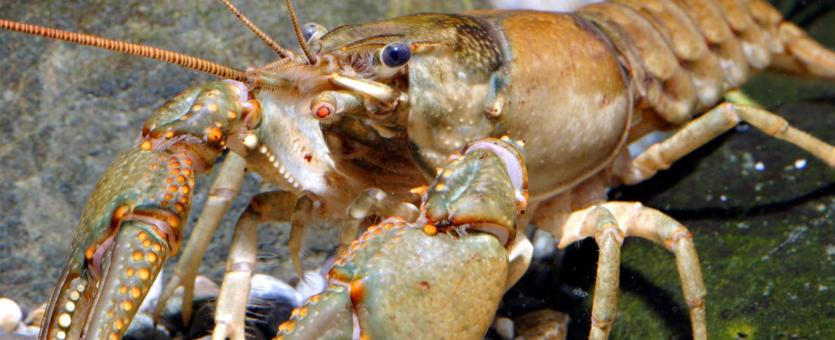
The virile crayfish (or northern crayfish) is reddish brown or green, without prominent markings. The pincers are green or blue green with orange tips; in adults, the pincers are conspicuously studded with whitish or yellowish knobs. Paired dark blotches run lengthwise along the abdomen. The rostrum (pointed, noselike structure between the eyes) has conspicuous notches or spines near its tip.
The virile crayfish is the largest of the crayfish in the Prairie Region and in the state.
Similar species: The calico (or papershell) crayfish differs from this species in having pincers that are gray, purple, or pink, a pale lengthwise stripe along the middle of the carapace and abdomen, and a rostrum without lateral notches or spines. The spothanded crayfish usually has a dark spot at the base of the movable finger and a saddle mark at the back edge of the carapace.
Adult length: to about 5 inches (or more).
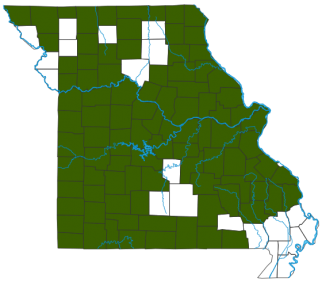
Effectively statewide: The native range encompasses all of Missouri's Prairie Region (in northern and western Missouri) and a band of streams along the northern and western border of the Ozarks. Widely introduced elsewhere. Absent from the southeastern lowlands and parts of the central Ozarks.
Habitat and Conservation
In the Prairie Region this nocturnal crayfish is very abundant in the pools of rocky streams. It occurs in fertile, warm, moderately turbid streams without a strong base flow and prefers abundant cover of slab rocks, logs, and organic debris. It also occurs in some artificial ponds that lack large populations of bass or other predatory fish. It sometimes digs tunnels horizontally into the bank that open underwater.
Food
Adults are primarily nocturnal; this active, alert, agile crayfish feeds on a variety of plant and animal material, both living and dead.
Status
The virile crayfish has been called the northern crayfish because it occurs farther north in Canada than any other crayfish. Its broad range comprises the southern tip of Hudson Bay, New England, western Montana, Oklahoma, and northern Arkansas.
The virile crayfish has been widely introduced beyond its native range, as it is a popular fishing bait. Its widely scattered populations in our central and southern Ozarks are probably the result of bait-bucket introductions.
Where it has been introduced into stream systems where it it not native, the virile crayfish is considered invasive, since it can outcompete the crayfishes native in those waters and cause their numbers to decline.
The virile crayfish is the only crayfish species that is legal to sell as live bait in Missouri.
Life Cycle
As temperatures drop in fall, virile crayfish move to deeper water to escape freezing. There, they become inactive and covered with silt, or hide under large rocks. When temperatures warm in spring, they return to shallow water. Breeding occurs from July until they retreat to deep water for the winter, and resumes for a time in spring. Eggs are laid in March and April, and mothers carry young in May and June. They mature in their second year of life.
Human Connections
This species is adaptable and prolific, and it achieves a large size. Wild and farm-raised stocks have considerable potential as a human food source. Wisconsin has had a wild fishery of this species for human food for many years. This species also commonly serves as fish bait.
Missouri has many species of crayfish that are confined to only certain stream systems and occur no where else in the world. These interesting, unique species are threatened with extirpation or extinction when crayfishes from other waters are introduced into their streams, often when people dump live bait. This is why it is illegal to transport and release crayfish, such as the virile crayfish, into another water body.
Ecosystem Connections
Crayfish are an important link in the food chain between plants and other animals, breaking down plant materials that are resistant to decay. They are an important food for many animals that occur around or in water, including fish, snakes, turtles, wading birds, raccoons, and mink.
